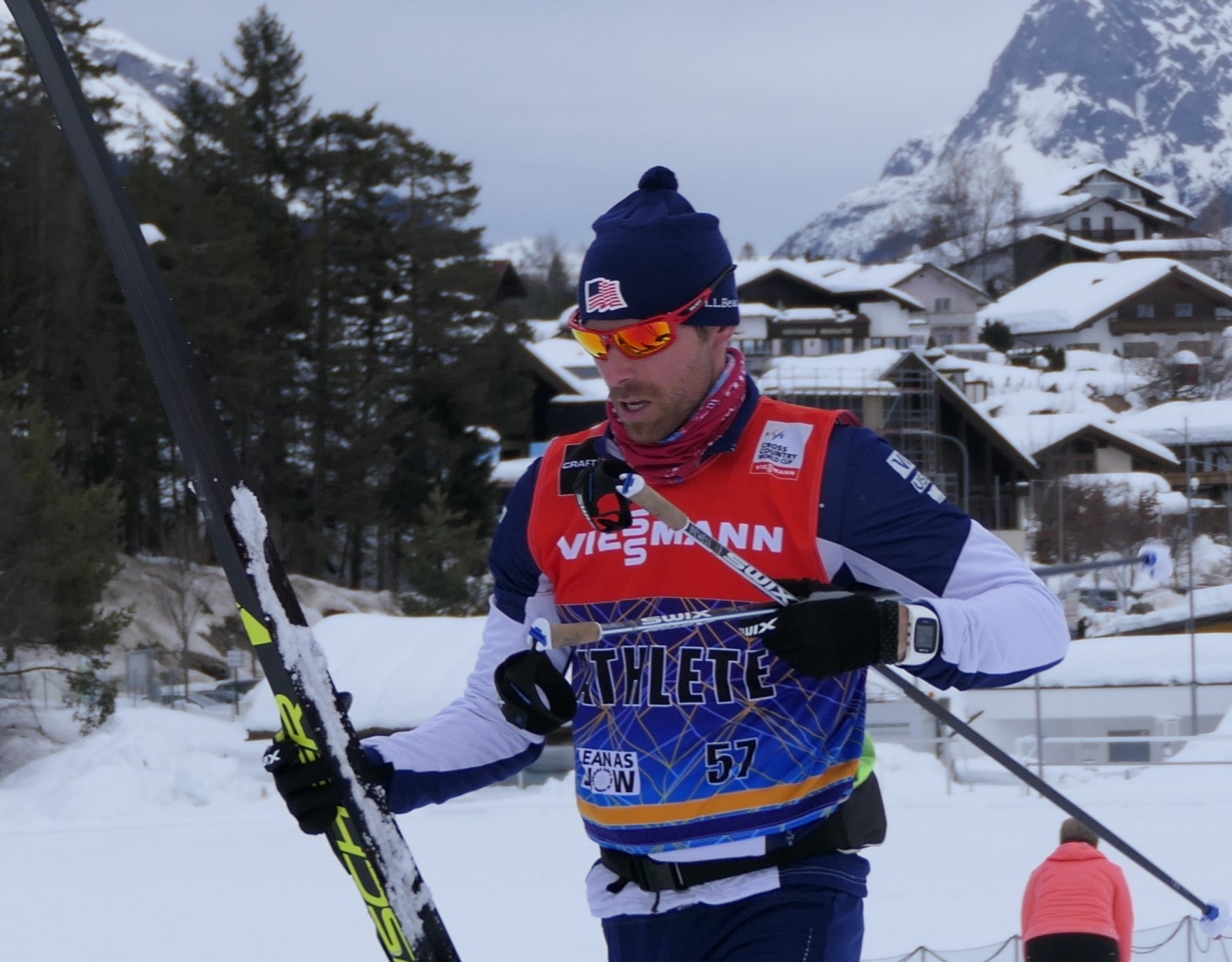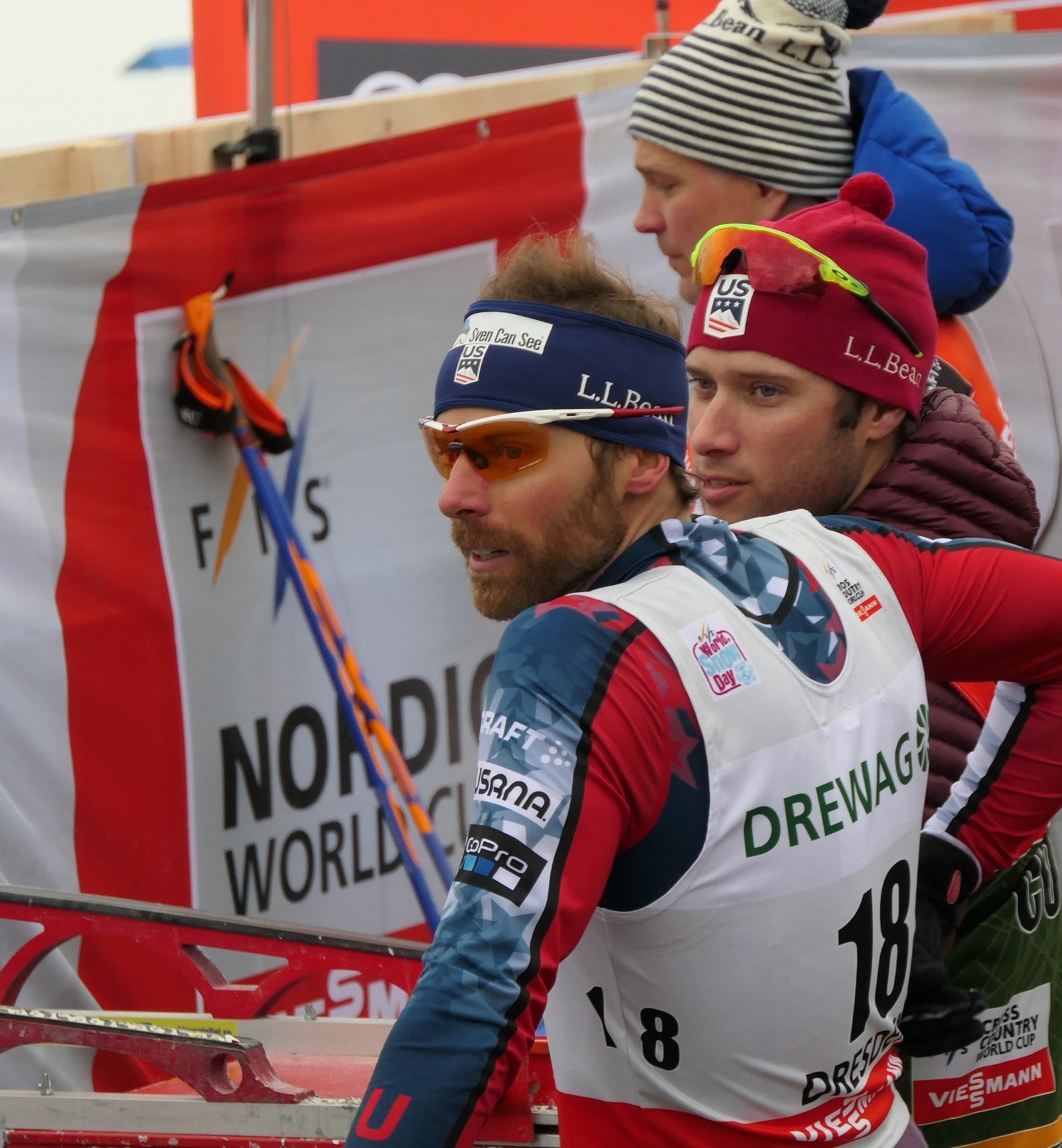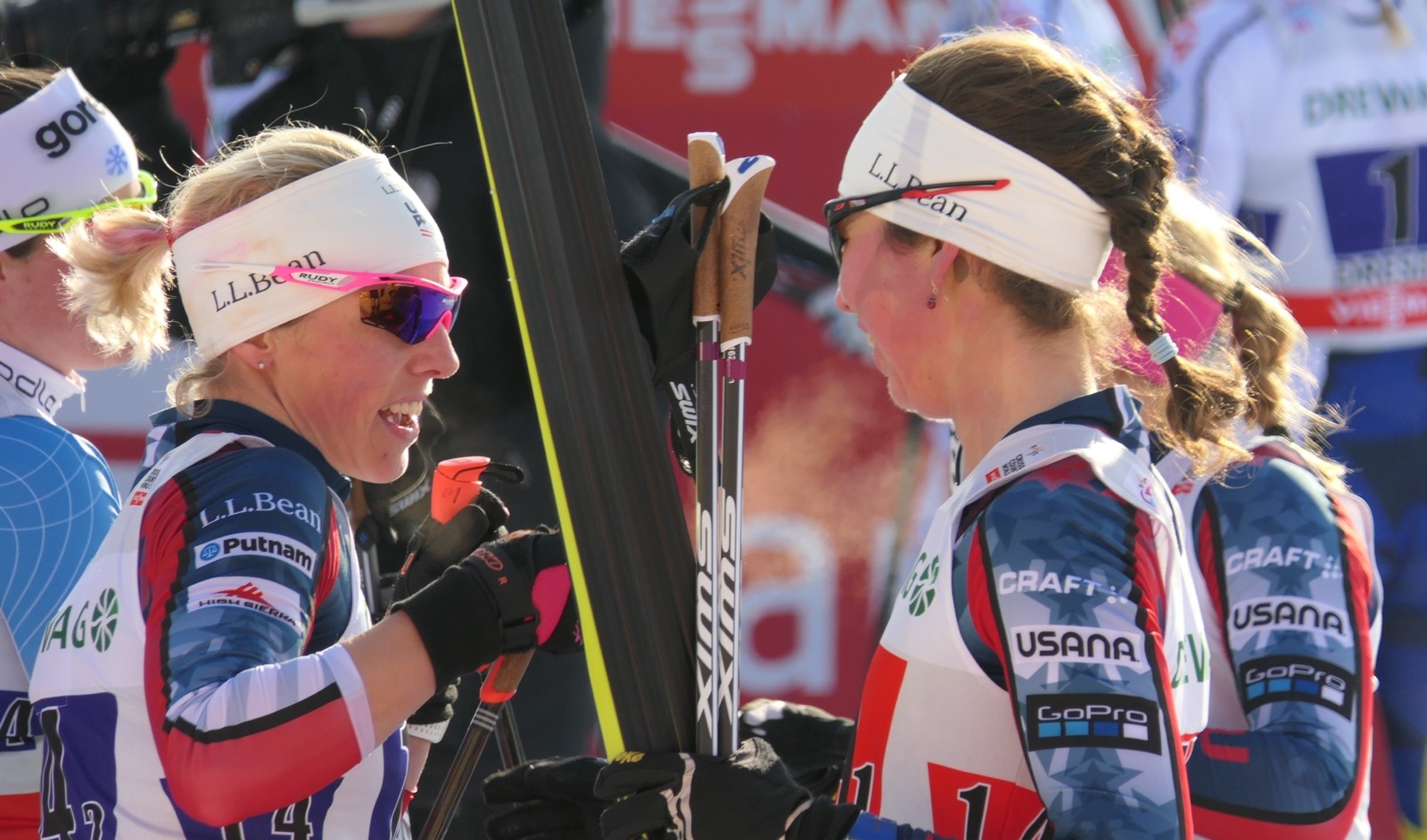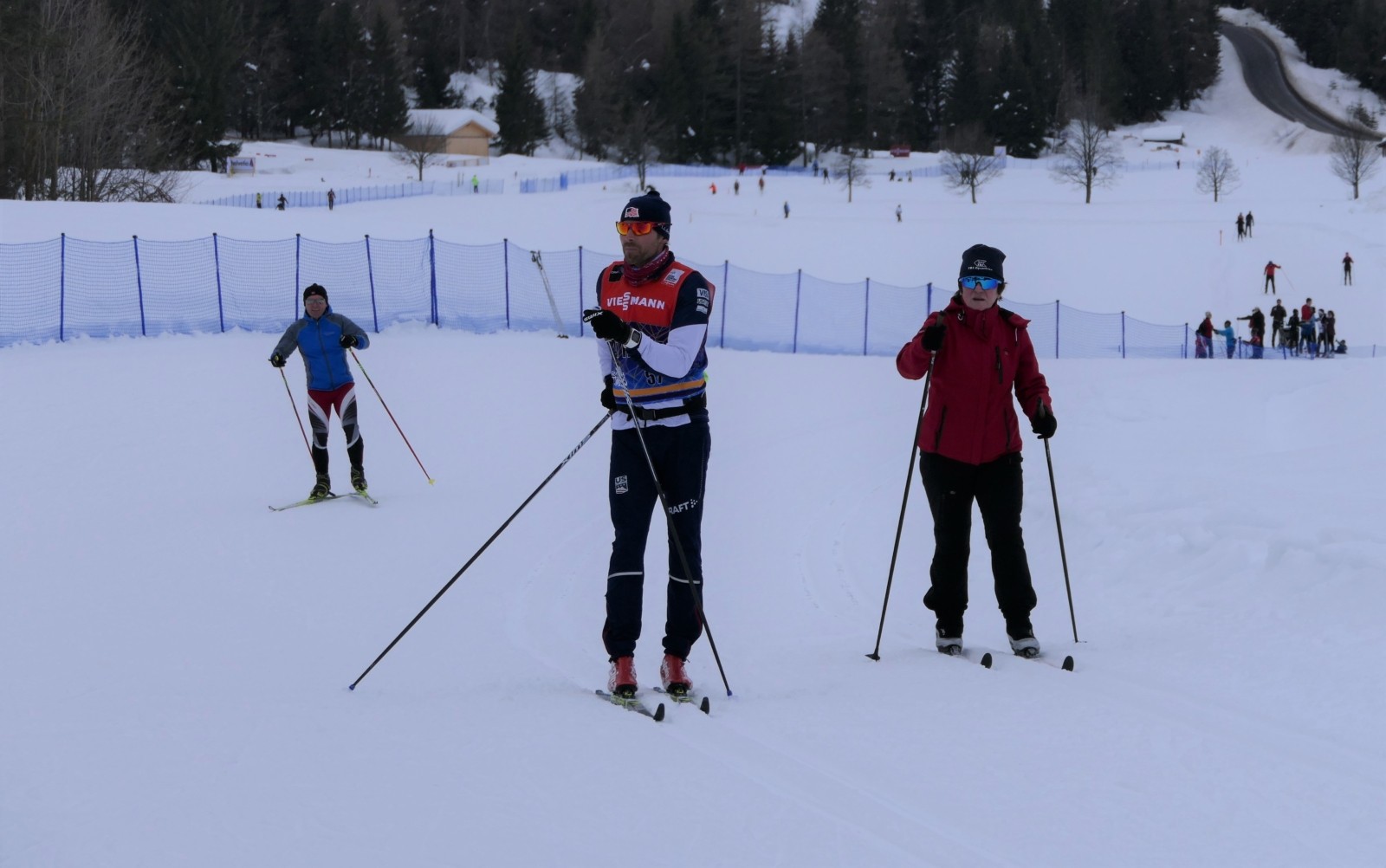
..One reason every ski-related resource in the world is writing these days about Andy Newell’s new endeavor is how well liked the man is on an international ski circuit. With a career spanning some 15+ years, 8 ( eight!) World Championships and four Olympics, Newell is a true living legend, particularly in ski sprint that was in its infancy at the beginning of the century when the American started.
With the last Olympics over & done with, a 34 year old native of Bennington, VT is moving to the next phase in life
Nordic Team Solutions is what Newell’s new coaching project is called, the one that will grow both future Nordic stars and the sport’s popularity. The Daily Skier caught up with the man to talk about his skiing career and his new company.

I. Life in skiing
– How did the world of skiing change in 15+ years that you were competing internationally?
In every sense – training, equipment, spirit of competition etc. etc.
The World of skiing has changed quite a bit since I started my first World
Championships in 2003. Equipment has changed, race formats have changed,
and because of that technique and training has continued to change. I think
this will always be the case and in a way I think its fun because it keeps
us evolving. I’m one of the few people on the world cup that can remember
racing against Tor Arne Hetland, Bjorn Lind, Zorzi, haha! Those guys were
epic and they would still be good sprinters today. I am proud that I could
score World Cup points in 2005 and can still score points in 2018 I have
had to evolve myself as a skier in order to stay relevant.
Maybe the biggest change in skiing since 2003 is that now the world’s best
skiers are expected to race everything. FIS was never a fan of having
sprinters and distance skiers… it was too confusing for the audience. So
events like longer sprints, and the TDS have definitely changed that.
– Let’s talk about US XCSki. You said once “When I was named to the US ski team in 2002 we had 4 people on the team”. The things have changed in that area too, clearly. Do you think pro-skiing in the US has “reached its capacity”, so to speak – or does it have a room for growth. Norwegian style? In other words, what would it take to bring the money to elite skiing Stateside comparable to those Norwegians, Russians, Swedes spend on running their teams?
I think skiing in the US has a lot of momentum right now, Kikkan and
Jessie had a lot to do with that by winning a golden medal. But the level of
skiing has continued to grow in the US in the last 15 years. When I got my
first World Cup podium in 2006 it was the first time in 24 years an
American had done it, the first one since Bill Koch. Now we are able to win
medals. Nothing happens over night but it has been a slow progression of
creating a positive training atmosphere, creating quality coaches, and
encouraging more Americans to stick with skiing. I think there is a lot of
room to grow and the best way the US can do that is by organizing
consistent Word Cup races here. I know there is a race in the works as we
speak but we need a World Cup in the US every other year at least. I think
that does amazing things for development, for funding, and for media
exposure in the country.

Ladies’ side of the US team is among the best in every sense, the Olympic gold is a proof of thereof . Men’s – well, not so much. What gives, in your opinion?
Yes there are differences between men and women at the moment in the US.
The US has always been about equality and has done a really good job of
giving women a great opportunity to succeed in sports. You see this in all
sports at the University level in the US and it has created a great
supportive atmosphere for women professional athletes. So for me it is no
surprise the US women are so good at skiing. I see them train and work with
with them and they don’t mess around. I don’t know for sure, but I would
guess at this point there are more women skiing in the US than any other
country so I think it’s natural that we are successful. For the men we have
a harder time retaining talent. Nobody really cares about skiing in the US
so the top athletes will naturally gravitate toward other sports. Because
of that skiing talent tends to come in waves. We had a ton of male talent
in the early 2000’s Kris Freeman, Andrew Johnson, Carl Swenson, we probably
had 4 different guys in the top 10 at World Championships 2003 and the
men’s team was 5th at the 2002 Olympic relay. Back then we didn’t have a
single woman that could score a World Cup point. So I think it comes in
waves more and you will see the men return. We have a lot of up and coming
talented guys in the 16-20 year old range. I’m pretty stoked for the future
Klaebo, Bolshunov.. these guys are 21 y.o. There are coaches who believe that the modern skiing has changed so much – technique especially – that the skiers peak at their early twenties, not early thirties as might have been the case quite recently. Agree? Disagree?
Yes I would agree that skiers can peak earlier now than in the past.
Modern skiing is all about speed and power, even distance racing is more powerful compared to back in the day when skiing was more about efficiency and pure fitness. Young skiers are also training more now and with more focus than 20 years ago so we are starting to see that even young athletes can win medals.
Skiing is, sadly, still massively dependent on weather conditions. On the other hand, there’s virtually no limit on rollerskiing development. Do you see it as way forward for development of the sport: training on asphalt for, say, 9-10 months – and then short trips to compete on the snow?
I hope that skiing is not eliminated by climate change. I have been very involved with environmental work in the US as with many of the other skiers on the team. It’s important that we look to the future for ways to reduce our carbon footprint but also keep skiing alive. New and improved ways to save snow and more efficient ways to make snow. I also think we will
probably have to change the legal altitude limit for skiing as well to be a bit higher unfortunately. I have no problem with there being a combined rollerski and snow ski World Cup but I think most of us would prefer snow.

II. Life post-competition career & Nordic Team Solutions
– How did you come up with an idea for Nordic Team Solutions?
I came up with the idea for Nordic Team Solutions a while ago but it was taken me some time to make the website a reality. One of the main reasons I got started this year is because I have always enjoyed coaching and one of my new goals is to help the next generation of skiers here in the US. So I have been working several training camps here in the US helping ski clubs,
and the US Ski Team at some training camps. If I was going to start coaching more training camps I wanted my own insurance and also my own certifications, a US Ski Team certification, safesport, and first aid. Once my coaching services were legit I realized it would be really fun to work with more ski clubs both here in the US and internationally and that is how
the business was born. Nordic Team Solutions has two sides. First, is the ability to hire me for training camps or clinics. And second is the ability to become a member on the site and see new training information.

– Who is it aimed at / who do you envisage as you top clients:
a) a committed amateur who wants to improve his/her Birkebeiner ( either of the two) result
b) a young talent about to commit to a pro-career in skiing
c) an athlete who reached a plateau in her/his training and can’t just quite cross into that Top30 in the FIS standings
Nordic Team Solutions is aimed at anyone who wants to improve their ski
racing. That could be a Birkebeiner skier, I think they would learn a lot
about elite level ski training if they became a member. Our clients could
be young talent, their coaches, or an athlete who feels they have not been
seeing the kind if training improvements they want. My goal with our
subscription content is to help share knowledge and keep people thinking,
including myself. There is not just one way to train for ski racing or one
secret formula. This is why I focus on the ‘student of the sport’ model.
Instead of just accepting a training plan from a coach, we should all work
together to understand WHY we do certain types of training and hoe they can
fit into our personal plan. This is what Nordic Team Solutions tried to
teach.
– Is Ms. Flowers-Newell involved in the new endeavor? Who else is helping among the elite skiers with international experience?
Erika is not heavily involved in the business but we do have some
partners. Right now were are partnered with Tom Cuddy who is a sports
physiologist out of Bozeman Montana. And Tad Elliott who studies recovery
and heart rate variability in addition to being a National champion in
skiing and mountain biking. So both Tom and Tad can be hired to work with
clients directly and they also submit material to the member resources on
the website. In the near future I would like to partner with a certified
Nutritionist who will do the same. I see that there is a need for this
information and it’s even better when it is all written specifically for xc
skiing. That is what makes Nordic Team Solutions unique. All our physiology
write ups, recovery, mental training, and team building material is all
written specifically for xc skiing. In the future I would like to partner
with waxing constants too who can provide information about ski preparation
as well.
To quote yourself, “I’ve been a little bit of a guinea pig for the U.S. Ski Team in a lot of ways” – how’s that experience going to be relevant in your coaching?
When I say I am a guinea pig what I mean is that I have tried a lot of
different types of training over the years. Just because you are a
successful athlete doesn’t mean you will be a successful coach but often
times many of the big mistakes we make as athletes can help us be better
teachers. I’m not too proud to admit that I have made plenty of mistakes in
my training and racing over the years and I think that helps me be a better
coach.
Would you give any indication on pricing e.g. what would a camp cost to a participant? Separately, the word “clinic” is not very commonly used in skiing – how do you define it in this context?
5. Training camp means I will be training alongside the athletes and also
helping to coach. A clinic is more of an instructional session where I am
teaching people a specific technique and also doing a presentation of some
kind. I can be hired for just one day of training or a several day camp so
the pricing is variable. Anyone interested can contact me thought the
website and I can send them our rates. Travel costs can be the biggest
expense for a client so sometimes clubs can work together or contact me
about my travel schedule and if I am in the area already it can cut down on
the price of a session.

Related Posts
- Bonés Skiroll – Here’s To First Five Years Or How To Build Profitable Company From Scratch
- Yelena Vyalbe: For Olympics 2026 We Will Prepare In Caucasus Mountains Rather Than Alps
- Nossum Tests Positive For Covid In Ruka UPDATED: Cleared On Subsequent Testing
- Tatyana Sorina Looks Unstoppable On Tracks – Eight Months After Having Baby!
- Engadin Refuses To Give Up!
